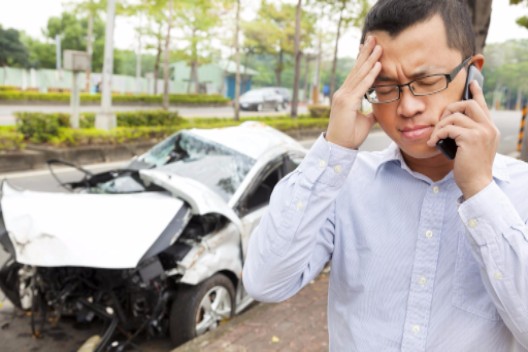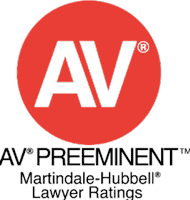
What is auto negligence and how to to prove that the other driver was at fault
If you’re involved in a Florida car accident, especially a hit-and-run or one resulting in serious injuries, the aftermath can be overwhelming. After the initial shock has worn off, many questions will probably flood to your mind: “Whose fault was it?” What rights do you have? Who is the first person you should call? What should you say to your insurance company? How do you prove that someone else caused your injuries?
Understanding how to navigate the legal process and interact with your Florida car insurance company is crucial.
Hit-and-run accidents with serious injuries
In the unfortunate event of a hit-and-run accident, where the at-fault driver flees the scene, a skilled hit-and-run attorney can be invaluable. A qualified injury attorney can help navigate the legal aspects of your case, protect your rights, and ensure you receive the justice you deserve.
Serious injuries and wrongful death
In cases of fatal crashes, a dependable fatal car accident attorney becomes indispensable. They can expertly navigate the complexities of wrongful death claims in Florida, fighting to secure maximum compensation for the victims’ families.
Florida is known for its high crash rate, so you’ll want to hire an attorney who can try your cases quickly and effectively.
One of the first things your attorney will have to do is prove that negligence occurred. So what are the main elements you must prove in a Florida car accident negligence case? Here is an overview:
1. Establishing a duty of care
The first element of any negligence claim is to establish the existence of a duty. While you’ll later get around to proving that another person breached that duty, there must first be a duty to be breached.
For instance, any time you drive, you have a duty to keep other members of the public safe to the best of your abilities. Your duty extends to other drivers, pedestrians, motorcyclists, bikers, and any other person you might encounter in the course of driving.
If you were hurt in a car accident caused by someone else, then it’s almost always true that the other driver had a duty toward you.
2. Breaching of duty
The duty of care in most car accidents comes down to the “reasonable man” standard. Individuals are expected to act as a reasonable person might in a given situation. This can mean different things depending on each case.
For instance, if a person causes a two-car wreck because of some maintenance problem on their vehicle like their tires blew out, then the question is whether that driver used reasonable care in inspecting their vehicle and replacing the tires on a recommended basis. Your lawyer’s job is to show the judge and jury that the person who crashed into you failed to exercise reasonable care, thus breaching their duty toward you.
Some scenarios provide nearly automatic proof of unreasonable behavior. A reasonable person follows the law unless there is some compelling, overarching reason not to do so. The reasonable person would not speed, for instance, unless they had to do so to save a life. The reasonable person does not swerve or drive recklessly. When you can show that the other driver broke the law, you can almost always prove that their action was negligent and “unreasonable.”
An action doesn’t necessarily have to be against the law to constitute negligence, though. For example, even if being distracted by kids in the backseat isn’t technically against the law, it may still be deemed as negligence by a jury.
3. Comparative negligence
As of 2023, Florida uses a modified comparative negligence system when determining fault in an accident. Under this system, fault can be split among multiple parties, and the plaintiff (injured person) can recover damages as long as they were not more than 50% at fault. However, their compensation will be reduced by their percentage of fault.
So, as an example, if a jury finds that the person who hit you was 90% at fault and you were 10% at fault, whatever damages you recover would be reduced by 10%. In this case, if you would have been awarded $50,000, your final compensation would be $45,000, reflecting a 10% deduction for your percentage of fault.
If you were behaving totally reasonably and the other driver was not, then the other driver could still be found 100% at fault, allowing you full recovery. This means that part of the challenge of proving an injury claim in Florida is not only showing the negligence of the other driver but also proving your own reasonableness.
Car Crash Guide: What to Do After an Auto Accident
Tips on what to do immediately after the crash and in the seconds, minutes and hours that follow.
4. Proximate causation
Next, your attorney must prove that the unreasonable actions of the defendant were the proximate cause of your injury. In a typical wreck, it’s often sufficient to show that, if not for the actions of the other person, you wouldn’t have been injured. For example, if they hadn’t driven through a red light, then you wouldn’t have ended up with a broken leg.
There are many intervening or superseding causes that can come into play to complicate a case, but an experienced lawyer can provide enough evidence to show without a reasonable doubt that the other person’s actions were the direct cause of your harm.
5. Establishing damages
Lastly, your attorney must indicate that you were damaged in some clear, explicit way. With car accidents, again this is usually quite easy. You will have a chance to show how you were injured (physically, emotionally and/or financially), and your medical bills may be evidence of damage. Negligence, it is said, cannot exist in the air. If the other person was negligent and you were unharmed, then there is no recovery possible.
If you’ve been hurt in a wreck, contacting a good lawyer should be a top priority after obtaining medical treatment. At Lorenzo & Lorenzo, we know how to try accident cases and prove that the other person was at fault. We can work our way through the elements of negligence to help you secure the best possible outcome. Contact us today to schedule your free consultation.







